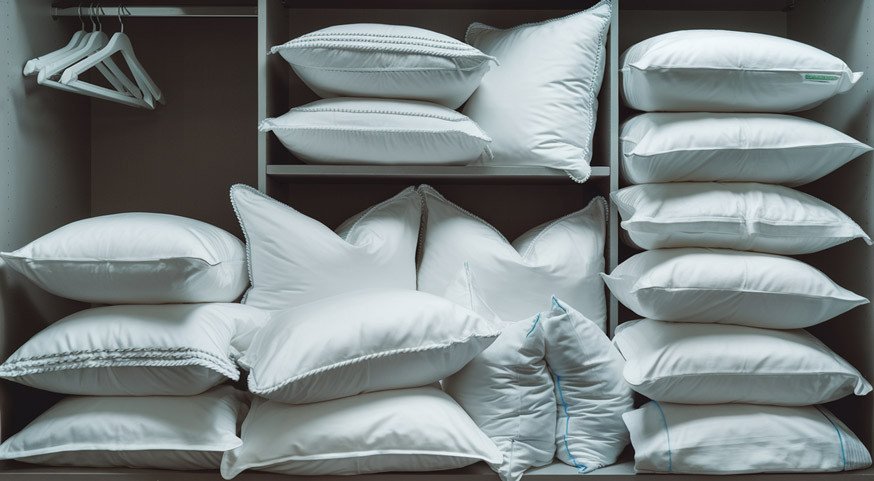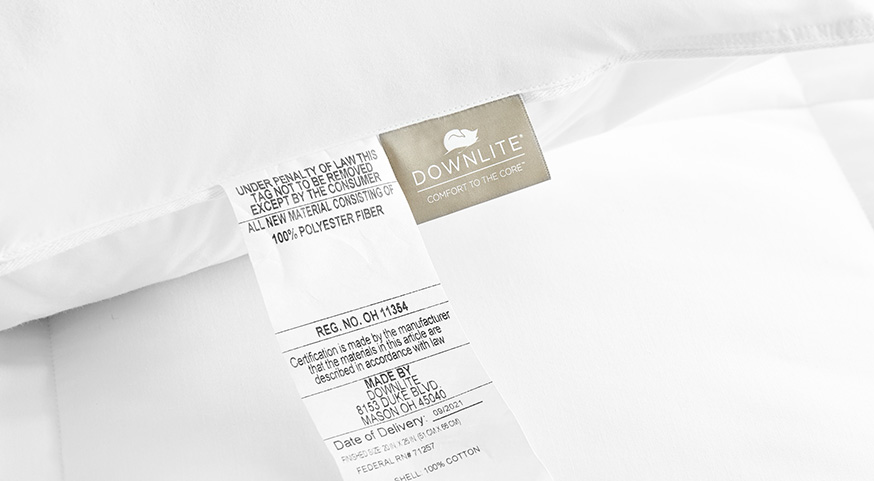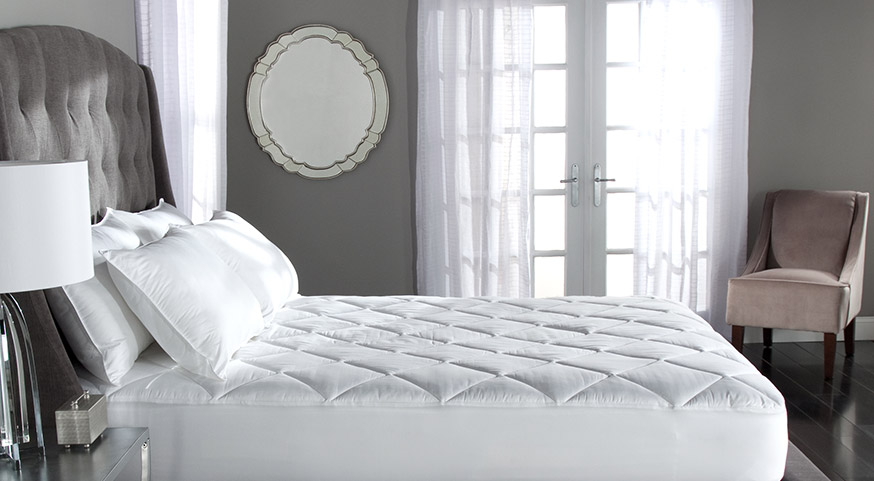Posted by Stefan Hunter on Jan 06, 2025
Top 20 Pillow Facts to Blow Your Mind: DOWNLITE Blog
When you think about pillows, the first things that come to mind are comfort and sleep. However, these seemingly simple items have a rich history and many interesting facts that many are unaware of. From ancient civilizations to modern innovations, pillows have played a significant role in human culture and well-being. This blog will delve into fascinating pillow facts you probably didn't know.
The Ancient Origins of Pillows
Pillows date back to ancient Mesopotamia, around 7,000 BC. However, they weren't the soft, fluffy cushions we know today. Early pillows were made of stone! These hard pillows were used to elevate the head to prevent insects from crawling into the ears, nose, and mouth during sleep.
Symbol of Wealth
In ancient Egypt and China, pillows were a luxury item reserved for the wealthy. The materials used—such as marble, jade, and ivory—were expensive and symbolized status. In China, the number of pillows one owns indicates one's social standing.
Pillows and Health
The ancient Chinese believed that pillows had health benefits. They filled them with materials like herbs, jade, and porcelain, thinking these elements could transfer their properties to the sleeper, promoting health and warding off evil spirits.
The Evolution of Pillow Materials
Feather and Down: In medieval Europe, feathers and down from geese and ducks became popular filling materials for pillows among the affluent, offering a softer sleeping surface.
Synthetic Fillers: The 20th century saw the rise of synthetic materials like polyester, making pillows more affordable and accessible.
Memory Foam: Invented by NASA in the 1960s for aircraft seats, memory foam found its way into pillows, providing support by molding to the shape of the head and neck.
The Pillow Fight Phenomenon
Pillow fights aren't just child's play. They have become cultural events worldwide. For instance, International Pillow Fight Day is celebrated annually in cities across the globe, where people gather to engage in friendly pillow combat.
The World's Largest Pillow Fight
The Guinness World Record for the largest pillow fight was set in 2018 in Minnesota, USA, where 7,681 participants engaged in a massive pillow brawl. This highlights the universal appeal of this simple joy.
Pillows in Space
Astronauts don't use pillows in space the way we do on Earth. Due to microgravity, they sleep in sleeping bags attached to walls, and pillows aren't necessary because there's no weight pressing down on their heads.
The Pillow Market is Booming
The global pillow market is a multi-billion-dollar industry. With increasing awareness of sleep health, consumers are investing more in specialized pillows, such as those designed for neck support, anti-snoring, or even intelligent pillows that track sleep patterns.
Cultural Differences in Pillow Use
Japan: Traditional Japanese pillows, called "sobakawa," are filled with buckwheat hulls, which provide firm support and promote airflow.
In some African cultures, wooden or carved pillows, known as "headrests," protect elaborate hairstyles during sleep.
Pillows and Allergies
Many people are allergic to dust mites, which thrive in pillows. To minimize exposure, it's recommended to replace pillows every 1-2 years and use allergen-proof covers.
The Art of Pillow Arrangement
Interior design has elevated pillow arrangement to an art form. Decorative pillows, or "throw pillows," enhance the aesthetic appeal of living spaces by reflecting personal style and current trends.
Technological Innovations
Modern pillows have integrated technology to improve sleep quality:
Cooling Gel Pillows: Designed to dissipate heat and keep sleepers cool.
Anti-Snore Pillows: Shaped to align the head and neck to reduce snoring.
Smart Pillows: These are equipped with sensors to monitor sleep patterns and even play music.
The Environmental Impact
With sustainability becoming a global focus, eco-friendly pillows made from organic cotton, bamboo, and recycled materials are gaining popularity, reducing the environmental footprint. Consider GRS Certified pillows materials like PrimaLoft®.
Pillows in Literature and Idioms
Pillows have found their way into language and literature:
"Pillow Talk" Refers to the intimate conversation between lovers in bed.
Proverbs: "Better a pillow of stone than a burden of debt," highlighting the value of peace of mind over material comfort.
Sleep Positions and Pillow Choices
Your preferred sleep position affects the type of pillow you should use:
Back Sleepers: Medium-thick pillows to support the natural curvature of the neck.
Side Sleepers: Firmer pillows to fill the gap between the ear and shoulder.
Stomach Sleepers: Thinner pillows to prevent the head from being pushed up unnaturally.
The Pillow Menu
Luxury hotels often offer a "pillow menu," allowing guests to choose from various pillow types—down, memory foam, hypoallergenic, etc.—to ensure optimal comfort.
The World's Most Expensive Pillow
Dutch cervical specialist Thijs van der Hilst designed a $57,000 pillow. It's custom-made using 3D scanning technology, filled with Egyptian cotton, silk, and non-allergenic Dutch down and even includes a 24-carat gold cover and sapphire and diamond accents.
Pillow Maintenance
Cleaning: Many pillows are machine washable, but it's essential to check care labels. Regular cleaning can extend a pillow's life and maintain hygiene.
Fluffing: Keeping pillows fluffy can prevent them from becoming flat and uncomfortable. Some pillows benefit from being placed in a dryer with tennis balls to redistribute filling.
Check out BeddingCare.com for tips and tricks on maintenance.
Psychological Comfort
Pillows aren't just physical comfort objects but also provide psychological solace. Hugging a pillow can reduce stress and anxiety, offering security.
Pillows in Therapy
Occupational therapists use weighted pillows and cushions to help individuals with sensory processing disorders, providing calming deep-pressure stimulation.
Conclusion
Pillows are more than just sleep accessories; they intertwine with history, culture, technology, and health. They've evolved significantly from their ancient origins as stone headrests to modern, bright pillows that enhance sleep quality. Next time you lay your head down, remember there's more beneath you than fluff—there's a world of fascinating facts!
Tips for Better Pillow Use:
- Assess Your Pillow Needs: Consider your sleep position and health concerns like allergies or neck pain.
- Invest in Quality: A good down pillow can improve sleep quality and overall health.
- Regular Replacement: Don't hold onto pillows indefinitely; replace them every couple of years for optimal support and hygiene.
Sleep well and rest easy, knowing you're now a pillow aficionado!











